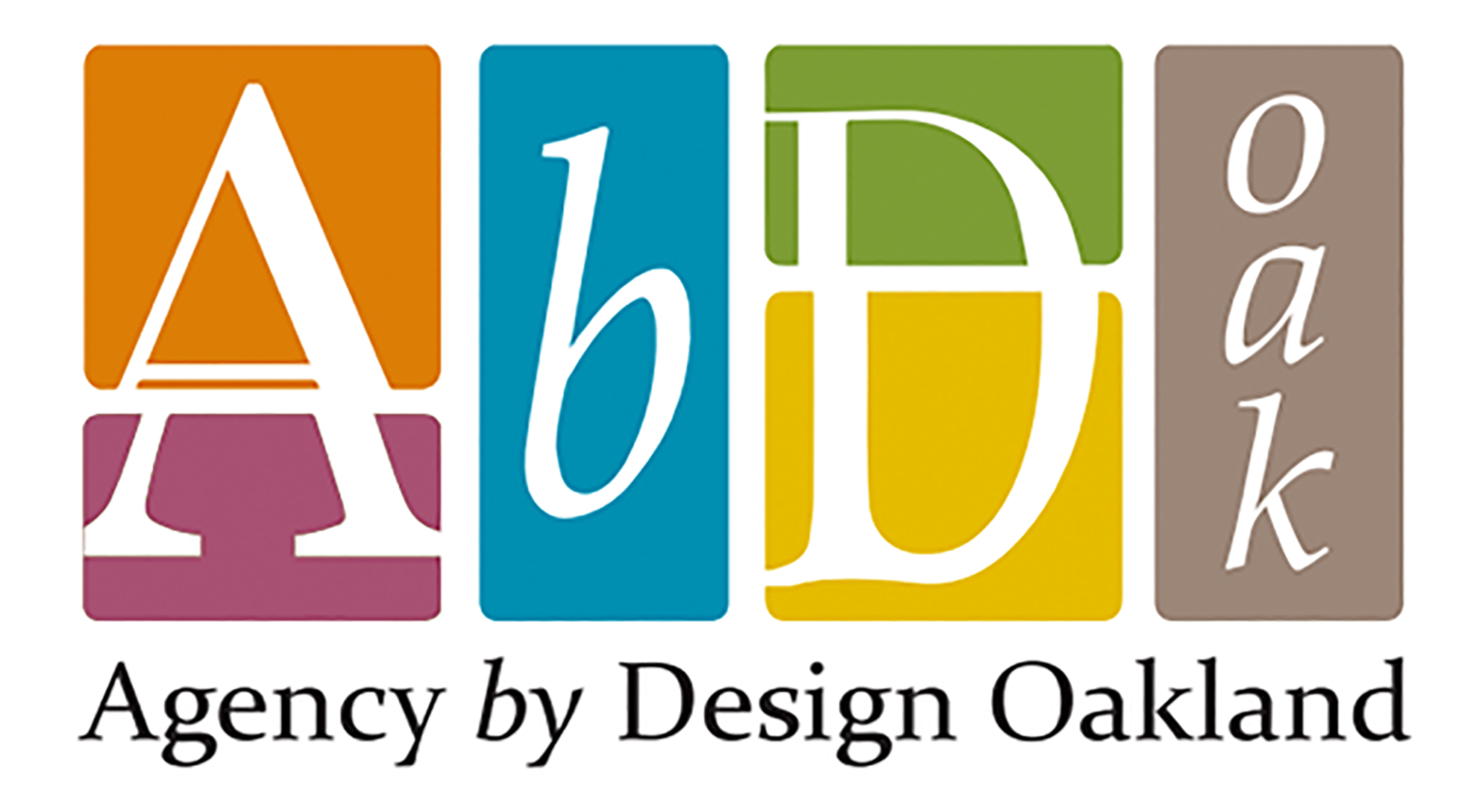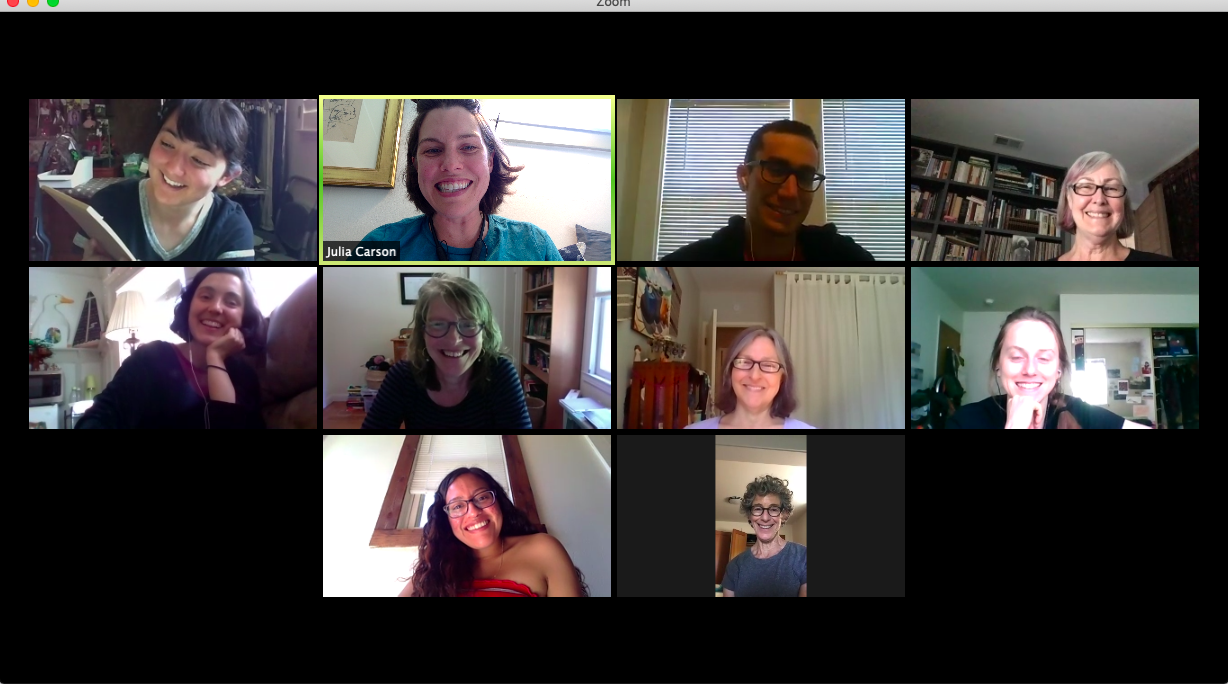By Julia Carson, 11th Grade English Teacher at Oakland International High School & a 2019 - 2020 Agency by Design Oakland Teacher Fellow. The mission of Oakland International High School is to provide a quality alternative education for recently arrived immigrant students in English language acquisition and in preparation for college.
TEAM WONDER: A CASE STUDY IN EQUITY DURING DISTANCE LEARNING
This past spring, a few weeks into distance learning, I was talking with 11th grade student Alexander, who, to my utter surprise commented, “I like this, Miss. I’m getting more attention now.” I thought, “WHAT? How could ANYONE LIKE distance learning work on a highly rigorous essay writing project?”
But if anything, the move to distance learning has forced me to be a more equitable teacher. Freed from the constraints of a classroom, where everyone sits in the same chair, and works at the same sized table, and has the physical tools necessary to participate on more or less equal footing, I’ve had to hone in on each and every individual student’s current learning needs.
In speaking with students during this time I can see that the inequities that typically camouflage insidiously in a physical classroom have become cripplingly obvious. Students with functional educations in their native language are comfortable and confident in their innate right to ask for what they need. They feel empowered to call and text a teacher as questions arise. But students with more interrupted formal educations, meaning they have potentially missed a year or more of school, have learned over their lives that they don’t have a right to ask for what they need, or to speak up when they don’t understand. They have learned to stay quiet and obedient, and to not attract attention. When questions arise during distance learning, these students are rapidly disengaging. Distance learning = inequities revealed in all their full force. In an OpEd in the NY Times, “What We Lose When We Go From the Classroom to Zoom,” Karen Strassler writes “When we pretend that inequities don’t exist, we allow them to persist unchallenged.” So, I knew I had to try something different.
11th grade student, Wilman, gives me a FaceTime fist bump after our long meeting, discussing how to best prepare for his daily meetings with volunteer, Leah.
Eleventh grade at Oakland International, where 100% of our students are newcomer English Language Learners, is when students learn to write a real argumentative essay for the first time. In my English class this is the overarching driving content goal, all year long. Being able to organize your thinking and effectively communicate in written form is crucial. When school closures hit, due to COVID-19, my students had almost finished reading the novel Wonder and were gearing up to write their essay. When distance learning began I wondered, should I give up? Create a new curriculum better suited to online platforms?
If I gave up, would I be betraying my students’ needs? This was surely foundational content knowledge. I vacillated for the first two weeks, unsure of how to balance what was possible to do in the face of changing challenges of distance teaching. But, how do I best serve them? This was an isolated crisis of conscience. At the time, I was only getting engagement from about 35% of my 100 students. Was it ok that only 35% of them could do the assigned work, well enough, independently? It was achingly frustrating, as I spoke with more and more students, and saw them sinking into at-home lethargy and depression.
Based on the emphatic support of the rest of the 11th grade team of teachers, and my own hopes, prayers, and faith in students’ capacity, I determined to figure it out and move forward.
After multiple failures, I accepted that my students needed help--real help--way beyond Ms. Julia help. I considered the resources at my disposal and contacted a variety of different people to build what eventually become TEAM WONDER: a team of ten educators and volunteers. The 11th graders and I are very grateful for their ingenuity, kindness, and help, without which none of this work would have been possible.
One of Team Wonder’s weekly check-in / support meetings in the spring, 2020.
These are the marvelous people who made up Team Wonder:
Ellen Chamberlin is a paraeducator at OIHS. She lives in Oakland with housemates and really misses hugging.
Irene Cocco is currently finishing her Americorps service at OIHS and will be returning as a Newcomer assistant in the fall. She lives in Oakland and is constantly inspired by the OIHS community.
Momo Gomez is an AmeriCorps team member finishing out her career at OIHS after several years of volunteer service. She is a board director of an education company based in Kanagawa, Japan, and loves working with English language learners from all over the globe.
Basha Millhollen, PhD, OUSD volunteer, is a retired former teacher, administrator, educational researcher. Her career began as a teacher's aide for Migrant Education and ended as a CA school district assistant superintendent.
Carol Badran, OUSD volunteer, retired after two decades from the San Francisco Dept of Public Health, and recently from teaching health at City College of San Francisco. Her passion has always been working with youth.
Alison Seevak has volunteered at OIHS for the past four years. An enrichment teacher in the Albany Unified School District, she is the proud single mom of a high school junior.
Leah Brumer, OIHS volunteer, is a French translator, the granddaughter of immigrants, daughter of a retired Oakland teacher, graduate of Oakland High School and mother of graduates of Oakland Tech and Berkeley High School.
Adam Segal is an OUSD volunteer, as well as a former and future math teacher. He lives in the OIHS neighborhood.
Karla Maldonado is a paraeducator at OIHS.
This team was an amazing group of humans, but they hadn’t taught an argumentative essay writing project, so every step of team work with students needed support and clear direction. I designed a spreadsheet, with a separate sheet for each volunteer’s student caseload to coordinate and communicate progress (or lack of progress) with every single student in the grade. Then, I wrote and designed a library of resources to serve Team Wonder. Documents like “Troubleshooting Problems with Writing a Claim,” “Example Introductions” or “Chapters We Read and Chapters We Skipped.”
Coordinating Team Wonder’s work has meant using a Google Sheet to communicate and keep track of who we’ve worked with, when, and on what. It also meant taking the time to teach some volunteers how to use google docs for the very first time!
I determined that every Monday, we would have a meeting to check-in, question, comment, brainstorm, review, change course if necessary, give feedback, and share best practices, as they evolved in these new waters.
We learned how to help students set norms around how to prepare for their meetings with volunteers (set an alarm clock, identify a quiet place to ‘meet’, have a snack beforehand, let the people you live with know that you’ll be unavailable for a half an hour, get a glass of water, get your materials, make sure the time consistently repeats, make sure your cell or internet signal works in that quiet place.)
I decided that, given that students would receive the attention they needed, that the most important thing was that all students were reading, and practicing argumentative writing skills. So, if lower literacy students needed differentiated assignments, that was absolutely fine. Since more advanced students could do much of their writing work independently, I created consistent, daily ‘office hours’ on Zoom, when any student could always access me to ask a question or get help.
For students who (for so many reasons) had disengaged with school, we reached out via text and phone twice per week, determined to keep messages short, to the point, and positive, simply re-inviting students to get help, and asking a brief non-school related question. Each week, we communicated with parents via a brief text, if we hadn’t heard from unresponsive students, to please pass on the message / invitation. And slowly, slowly, slowly but surely, they came back and re-engaged. Not every single student, but 80% of them.
“When my LOWEST LITERACY SIFE student is asking her helper to keep reading for an hour together, I want to know more about why? What are they doing together that’s so different from what happens in my classroom? ”
Because of Team Wonder we were able to gauge more specifically what each student needs to learn best and where they’re at now. I’ve always been reluctant to let go of having the same expectation for all students; in the classroom I would expect “All students will write every part of the essay.” But now my expectation has changed to “All students will learn how to order their ideas and write argumentatively.”
The question remains, of course, how to differentiate this process better in the classroom? And how to do it when I’m the only adult helper around! Might it be possible for us to bring virtual volunteers with us back to the classroom, in some form?
I play with group reading protocols all year long. But the reading process currently taking place has made me question what I’m doing. When my LOWEST LITERACY SIFE student is asking her helper to keep reading for an hour together, I want to know more about why? What are they doing together that’s so different from what happens in my classroom? I know they’re moving much more slowly, at her pace, and stopping to talk more, but what else? I’ve let go of a lot of one-on-one meetings with students, and as they happen with other helpers, wonderful things are taking place that I want to know more about...How can I best gather, and notice these important observations from Team Wonder?
I’d designed a tool I call the “Exit Interview” to uncover and document what students have found most helpful in all this. After all, it’s quite possible that this approach may be called upon again. I’ll be using student feedback to focus our reflection with the Team about what has worked best. What have we learned about how to best deliver the literacy support students need in a time like this?
““I think talking on the phone helped me a lot. Even though I stayed at home by myself, I feel like you are always supporting me and helping me. It’s always better than texting or email. Phoning and zooming are 100% better.” OIHS student”
Some excerpts from student “Exit Interviews”:
“I feel proud because I have made a big achievement. It was good working with my helper because she helped me a lot and I had fun.”
“I think talking on the phone helped me a lot. Even though I stayed at home by myself, I feel like you are always supporting me and helping me. It’s always better than texting or email. Phoning and zooming are 100% better.”
“I am thankful for the help. I wish for more help.”
“Ms Alison answered my questions and explained a lot of words to me. It helped me feel calm.”
“I like it when it is just the two of us...I used to have fear about asking for help when I was at school. But now when my helper talks with me she understands how to help me do the paragraph. I am not afraid now.”
“It was really great to be able to have someone to talk to when I was confused and also learn new things from.”
Julia is about to joyfully begin her 10th year of teaching high school. A returned Peace Corps Volunteer, she originally hails from New York City, NY. Julia is a voracious reader, cook, traveler, mushroom gatherer, Christmas carol singer, beloved friend, sister & daughter, and soon to be first-time mom!





